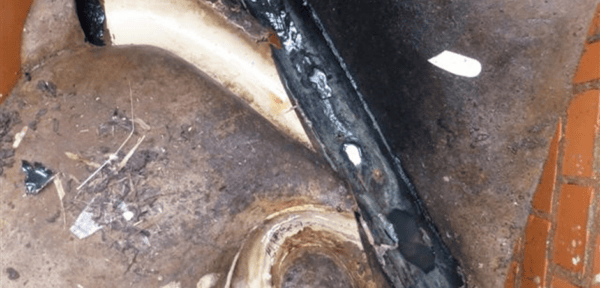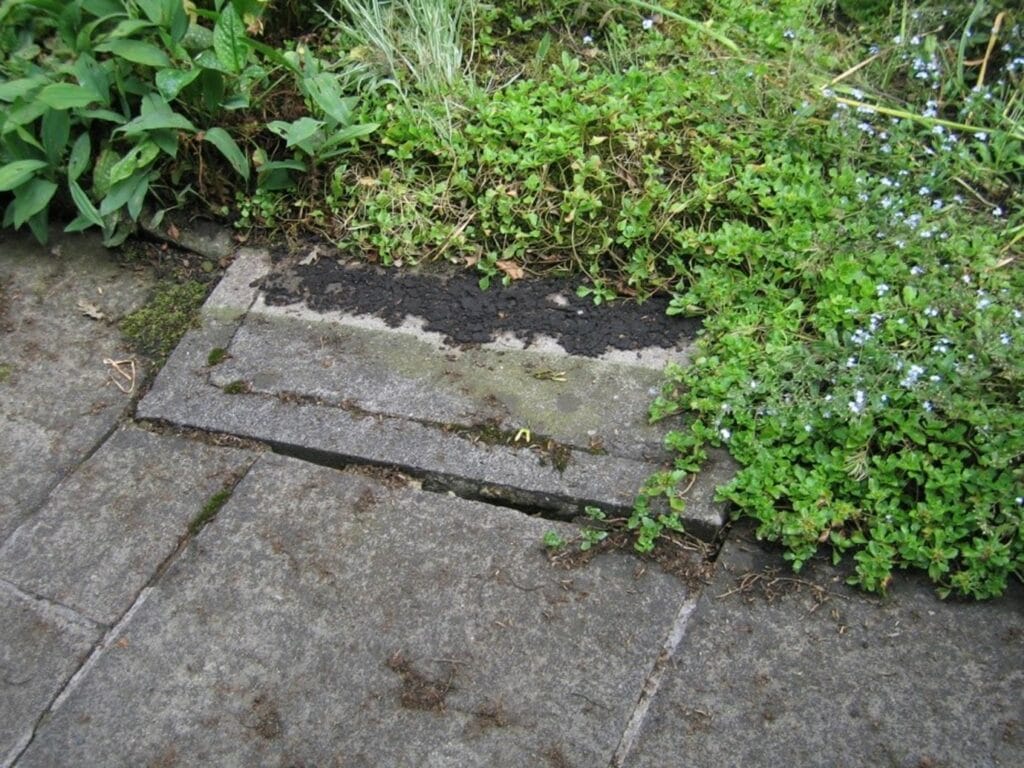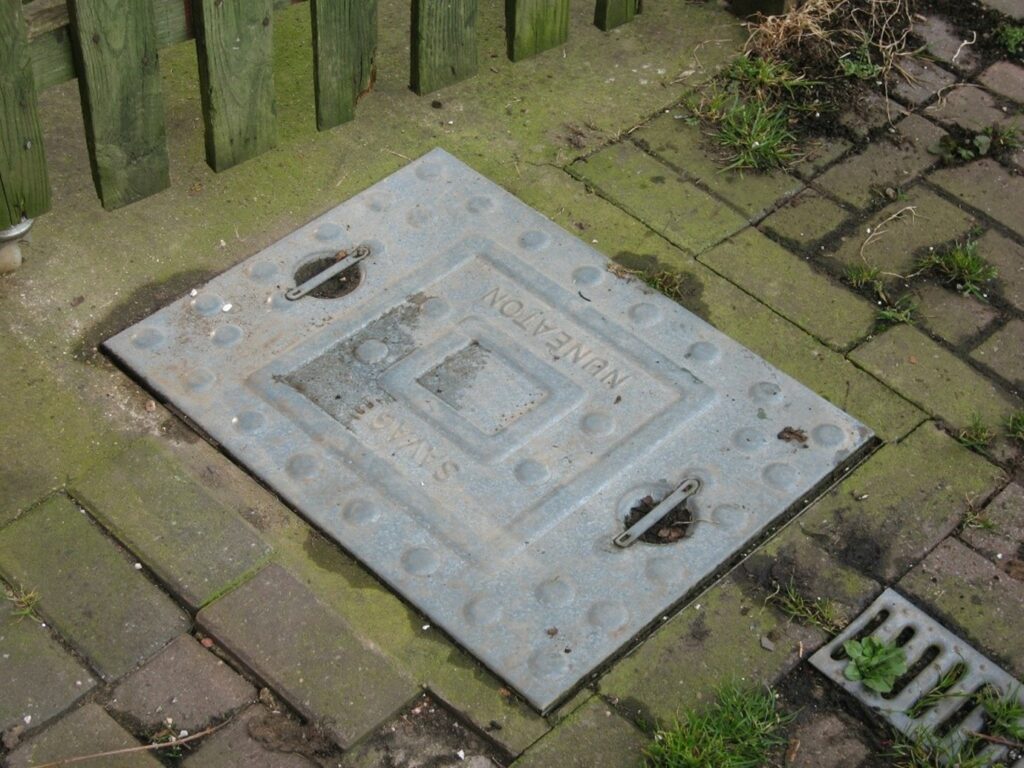Pitched Fibre Drains (Part 2).

How and when to report RICS’s pitched fibre drain products
by Phil Parnham, Director, BlueBox Partners
Introduction
Phil Parnham, director of BlueBox Partners, follows on from the pitched fibre drain article in Issue 27 of the Technical Bulletin with this feature focusing on how the same issues should be reported in RICS’s (Royal Institution of Chartered Surveyors) Home Survey products. Our previous article pitched fibre drains focused on reporting within Sava’s Home Condition Survey format. To get a complete picture, we recommend you read both articles.
RICS Home Surveys standards
The duties of practitioners regarding underground drains are described in the relevant practice notes, including:
- RICS HomeBuyer Report (Survey only), Professional Statement (PS), 1st edition 2016
- RICS Building survey, 1st edition Practice Note (PN), 2012.
- Surveys of Residential Property, Professional Guidance, 3rd edition, May 2016 reissue.
RICS have changed the name of their standards over the last few years, and the first two publications listed above are mandatory for members who are providing RICS licensed Home Survey products for their clients.
The third document represents best practice guidelines endorsed by the RICS but is not mandatory. It is aimed at RICS members who provide their own survey products outside of the licensed Home Surveys brand.
Review of duties in level two and level three products
Please note, ‘level two’; denotes HomeBuyer Report (HBR) with and without a valuation or equivalents and ‘level three’ to Building Surveys (BS) or equivalents.
Inspection of drainage systems – level two products
The PS and GN are broadly similar. For example, under G6 (Drainage) of the HBR PS, it states:
“Chambers (except in the case of flats) are visually inspected from ground level where it is safe and reasonable for the surveyor to lift the cover(s) “
Our interpretation of this includes:
- Don’t lift chamber covers in public spaces and/or common areas in flats. Only lift in areas exclusively used by the subject property.
- Don’t lift ‘heavy’ chamber covers. Examples include thick cast iron lids, those inset with brick paving’s, concrete and other heavy materials.
- Only spend a ‘reasonable’ amount of time and effort trying to lift chamber covers using standard equipment (e.g. chambers keys, large screwdriver/crowbar). As the HBR is an ‘economic’ product, you shouldn’t spend too long removing plant growth/grit and dirt from the chamber lid/frame junction. Do NOT unscrew any covers/lids.
Although the phrase ‘inspected from ground level’ suggests a straightforward visual inspection, if pitched fibre drains are suspected or identified, then you should spend a little more time trying to look up and down the drain as described in Issue 27.
The next relevant phrase from the PS is:
“Neither the drains nor drainage systems are tested (G6, page 54).”
This defines the difference between levels two and three. At level two, you should NOT make any special effort to observe the drains being used. You should note what you see when you lift the cover but not flush toilets or run water taps. If the drains are running when you are looking then that is a bonus but taking a more active role crosses the line between level two and three.
Under ‘other issues’ in G6, the issues of pitch fibre pipes are specifically mentioned:
“‘Pitch fibre drainage pipes identified in inspection chambers”.
Although this does not extend the visual inspection, it emphasises that pitch fibre drains are an issue that should be acknowledged by practitioners. This enhances our duty of care and creates a ‘trail of suspicion’ to follow if pitched fibre pipes are noted or suspected.
Inspection of drainage systems – level three products
Again, the PS and GN are broadly similar. Under G6 (drainage) of the BS PN (page 63), it states:
“The surveyor opens all reasonably accessible, lightweight inspection chamber covers within the curtilage of the property. The assumed routes of the drain runs and their general condition are reported based on a visual inspection. Where a water supply is available and turned on, the surveyor may also run water through the system as part of the inspection.”
Our interpretation is:
- Don’t lift chamber covers in public and/or common areas of flats. Only lift those in areas exclusively used by the subject property. Also, don’t lift heavy chamber lids.
- This is a level three service and client expectations and your duty of care are enhanced, therefore you should spend a ‘reasonable’ amount of time and effort trying to lift chamber covers using standard equipment. This usually includes removing some plant growth/ grit and dirt from the chamber lid/frame junction, unscrewing any covers/lids where possible and moving lightweight objects/ garden furniture to access the chambers.
- Also spend more time trying to look up and down the drain as described in Issue 27, particularly if pitch fibre pipes are noted or suspected.
Although drain tests are not carried out, there is a clear expectation that toilets should be flushed and taps left running (as long as the water is on) as a standard part of the inspection. Not only does this allow you to see if the drains are at least free-flowing but it could also establish the routes and layout of the drainage system.
This is reinforced in the Surveys of Residential Property Guidance Note (page 14) where it states: “When the surveyor considers it appropriate to the assessment of the system, turning on water taps, filling and emptying sinks, baths, bidets and basins, and flushing toilets to observe the performance of visible pipework.”
The BS Practice Note (p63) goes on to say:
“The surveyor must attempt to identify the means of foul and surface water disposal. There have been recent changes to legislation with which the surveyor should be familiar before undertaking the inspection.”
This covers issues such as misconnections of surface and foul water wastes and pipes, sustainable urban drainage systems, and responsibility for shared drains among others. Practitioners need a greater level of technical knowledge when providing level three services – it’s important to be familiar with the relevant rules and regulations.
As with the level two products, pitched fibre pipes are specifically mentioned under ‘other issues’ in the BS PN.

Figure One: In this inspection chamber, the main channel is formed by a pitched fibre pipe. This is unusual pitch fibre normally changes to salt glazed channels within the chamber.
Reporting on pitched fibre drains
Reporting the restrictions on inspection
If a draining system inspection is restricted in some way, then you must tell the client. The HBR PS is clear about this (page 45):
“The surveyor should inform the client and the latter’s advisers of any limitations to inspection of the property and give reasons for this in the text box at the top of the page – i.e. where an element(s) or part(s) of which would normally be inspected within the terms of conditions but could not due to various reasons (e.g. roof covered in snow, chimney stack hidden from view). If further comment is required, it can be included within the appropriate element text box.”
For both the HBR and BS licensed reports then brief notes should be included in the ‘limitations to inspection box’ at the top of the first page of the services section (section G). This should be concise descriptive and clarify why you couldn’t do the job the client expects. Here are a few examples:
“I could not inspect the drainage system because…
… the cast iron inspection chamber lid was rusted to the frame.
… the inspection chamber lid was inset with brick pavings and was too heavy to lift safely.
… a large soil filled planter was positioned directly over the inspection chamber and could not be moved safely.
If using your own level three format, there should be a similar section for this purpose.
As with all cases of restricted inspection, you should record the details in your site notes and photograph the feature. This will mitigate any potential misunderstanding when your client moves in.

Figure two: This half-hidden inspection chamber has a tight fitting concrete cover. Not only would the cover be too heavy to lift but it looks to be stuck fast in its frame. You should record this in your site notes, take a photo and tell your client in the report.

Figure three: Although this lightweight frame had a lot of debris between the cover and frame, we think you should take a little time to clear this so a full inspection can be carried out.
Limitations of inspection and the effect on condition rating
Broadly similar to the approach described in the last issue for HCS products, how to apply a condition rating to a partially inspected element is summarised here:
Partial inspection – If you haven’t been able to inspect all of the drainage system but you’ve seen enough to allow you to come to a general view, then allocate an appropriate condition rating but make sure your client understands it is based on a restricted inspection. A typical example would be where the lid of one inspection chamber is rusted shut but you’ve managed to remove the lids to the two other chambers in the property and you saw no worrying signs.
No inspection with no worrying signs – Where no chamber covers could be lifted, but ‘trails of suspicion’ are noted, allocate a ‘not inspected’ condition rating. Report the inspection restriction and consider adding at the end of the drainage section in G6:
“However, if you want to be sure about the true nature of the drainage, you should ask an appropriately qualified person to inspect the whole system”.
While this approach could be considered over-cautious, we think it is an appropriate approach. As the ‘not inspected’ decision will be partly speculative, it is helpful to bring this to your client’s attention. If they want certainty, then they must arrange for further investigations.
Inspection with worrying signs – If you’ve can’t lift any chamber covers but can see a ‘trail of suspicion’, then further inspection is required. In the Home Survey brand, this becomes an automatic condition rating three. Typical examples would include foul water seeping around the edge of the chamber covers, tall trees/dense shrubs growing directly over the line of older drains or local knowledge that other houses on the estate have pitched fibre drains.
Reporting on restriction implications
While informing clients why something couldn’t be done is important, it’s just as important to ensure they fully understand the implications. Both the HBR PS and BS PN acknowledge this and include the sentence:
“If further comment is required it can be included within the appropriate element text box.”
For pitch fibre drains, the text box is in section G6 Drainage. For level two products, the explanation of implications should be concise. With level three products, you may want to include more detail. The BS PN states reports should “identify the nature of risks in areas that have not been inspected” (page 12).
This is best illustrated by an example. Assume you have just inspected a semi-detached property that is part of an estate of similar properties built in the early 1960s. From your own local knowledge, you know that pitch fibre drains are used in some of the neighbouring properties and several have failed and been replaced. However, in this property a large soil-filled planter was positioned directly over the chamber cover preventing a full inspection.
Reporting for level two products:
An example of a comment for the ‘limitations to inspection’ box based on the above scenario:
“I could not inspect the drainage system because a large soil filled planter was positioned directly over the inspection chamber and could not be moved safely.”
Under section G6 Drainage:
“The property is connected to the public sewer and the drainage system consists of a combined drain for both surface water (for example rainwater, water from yard drains) and foul water (waste water from WCs, baths, showers sinks, basins and dishwashers). It is likely the underground drainage consists of pitched fibre pipes. Further investigations are required.”
Condition rating 3 (further investigation).
“It is widely known that the underground drainage to properties on this estate may be formed of pitch fibre pipes. This type of pipe can have a limited life and will be costly to maintain and replace. Additionally, these types of pipes may not be covered by standard building insurance policies.”
“You should ask an appropriately qualified person to gain access and inspect the drainage system and provide you with a report that includes a quotation for any repairs/ replacement.”
Reporting for level three products
Parts of a level three report will be the same. The main difference comes when you report the implications. Under ‘limitations to inspection’ box:
“I could not inspect the drainage system because a large soil filled planter was positioned directly over the inspection chamber and could not be moved safely.”
Under section G6 Drainage:
“The property is connected to the public sewer and the drainage system consists of a combined drain for both surface water (for example rainwater, water from yard drains) and foul water (waste water from WCs, baths, showers sinks, basins and dishwashers). It is likely the underground drainage consists of pitched fibre pipes. Further investigations are required.”
Condition rating 3 (further investigation).
“It is widely known that the underground drainage to properties on this estate may be formed of pitch fibre pipes. This type of pipe was commonly used during the 1950s, 60s and 70s was is made of various fibres soaked in black pitch. Over the years, this type of material can deform and deteriorate and often has an economic life of less than 30 – 40 years. If this happens, blockages can regularly occur and in the worst cases, drains may collapse altogether.”
“The nature of this type of pipe makes it difficult to repair. In some cases, the existing pitch fibre pipes can be reshaped and lined with a stronger and waterproof ‘sleeve’ without any excavation. However, if the drains are in a poor condition, this ‘no dig’ solution will not be an option leaving excavation and replacement as the only alternative. This can be costly.”
“The other problem with pitch fibre pipes is some building insurance companies specifically exclude them from their policies. This can result in the building owner having to fund the full cost of the repair. You should contact your building insurance company to discuss this matter.”
“Although I was unable to lift the inspection chamber cover, the drainage system in a number of similar neighbourhood properties do include pitch fibre pipes. I have organised repair schemes on behalf of other clients personally. However, to be sure about the true nature of the potential problems, you should ask an appropriately qualified person to inspect the whole system and provide you with a report and a quotation for any identified repairs or replacements. This investigation will usually include:
- Accessing all parts of the underground drainage system, possibly involving moving heavy objects and/or removing and replacing chamber covers if they cannot be opened. You may need to discuss this matter with the vendor.
- A video survey of the drainage system.
- Providing a full report together with repair/replacement recommendations.
This should be done before you commit to the purchase. “The final recommendations will depend on the discovered conditions but my experience of other properties in the neighbourhood suggests you should plan for considerable amount of repair.”
A level three report should provide the client with sufficient information to enable them to come to a purchase decision without having to go to another organisation for advice. We realise there is a risk, but this detail defines the difference between a level two and level three service. In this case, the final paragraph attempts to give the client a clear view of the likely extent of the possible repairs without commissioning (and paying for) a further investigation.
Reporting on other matters
In this article, we’ve focused on an example where a full inspection was not possible. Obviously, the circumstances of each job will change. In such cases you should adapt/ adjust/ add to phrases of this type. To summarise:
- Pitch fibre drains are always a condition rating three because they are likely to be at the end of their economic life, and
- Building insurers are unlikely to cover their repair/ replacement.